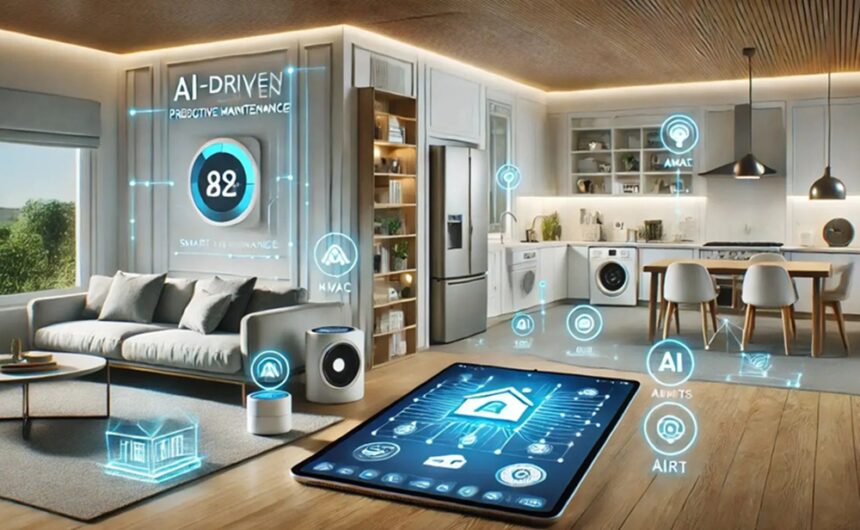Smart homes used to mean a smart bulb in the living room and a voice speaker in the kitchen. Now, Smart Home Tech is turning into something closer to a living assistant, with AI powered hubs, rolling robots, and locks that recognize a face or palm.
Homes in 2025 are starting to think ahead. Lights can glow on before someone steps into a room, cleaning robots empty themselves, and pet cameras flag odd behavior long before a problem becomes serious. At the same time, smarter security tools watch over doors and windows while AI cuts down on buzzing, useless alerts.
This guide walks through five device types that show where smart homes are heading next: AI hubs, home robots, biometric security, self cleaning gadgets, and smart pet tech. Each section breaks down what the device is, how it works in simple terms, and why it can matter for daily comfort, safety, cleaner rooms, and happier pets.
What Makes the Future of Smart Home Tech So Exciting?
The biggest shift is that Smart Home Tech is moving from “remote control” to “auto pilot.” Instead of people opening an app every time, homes are starting to respond on their own using AI, better sensors, and faster connections like fiber and 5G.
A smart thermostat can learn that a family leaves by 8 a.m., drops the heat while the house is empty, then warms things up just before the first person returns. A mix of standards, such as Matter, now lets more brands work together, so a single system can handle lights, locks, plugs, and speakers without five different apps. Independent guides to the best smart home devices on the market show how wide the selection has become.
AI, automation, and homes that learn daily habits
Modern Smart Home Tech quietly watches patterns. It notices when the first light turns on each morning, when the TV usually shuts off, and when the front door locks at night. Over time, the system “learns” that routine.
From the homeowner’s point of view, this feels simple. The house starts to preheat the oven area light at dinnertime, close the blinds when the sun hits the sofa, or cool the bedroom before bedtime. Instead of dozens of taps on a phone, routines run on their own, with small changes over time as habits shift.
Connected devices that work together, not alone
Early smart gadgets worked like islands. A smart bulb did not talk to the smart lock, and the camera did not care what the thermostat was doing.
The new wave focuses on scenes and routines. A “goodnight” command or button can dim lights, arm security, lock smart deadbolts, lower the thermostat, and even start a robot vacuum in the rooms that are empty. AI hubs and robots, covered in later sections, often sit at the center of these scenes, turning single tricks into full home experiences.
AI Smart Home Hubs: The New Brain of the Connected House
An AI powered smart home hub is the command center of a modern connected home. It can be a smart speaker, display, or a small box tucked near the router, but its job is the same: connect lights, sensors, locks, cameras, and appliances into one brain.
Many hubs now do more than pass along commands. With AI features, they start to notice patterns and suggest smarter routines. Families juggle fewer apps, guests get simple voice control, and advanced users can build complex automation without writing code.
How AI powered hubs learn and simplify daily routines
Over time, a hub might notice that everyone leaves by 7:45 a.m. on weekdays. It can suggest a “leaving home” routine that turns off lights, switches some outlets off, lowers the heat or AC, and locks the doors once phones are detected as away from home.
In the morning, the hub can warm the house before the earliest riser usually wakes, start a favorite news briefing, and open motorized blinds for natural light. Voice commands and simple touch screens give quick shortcuts, but the real value comes from routines that require no thought at all.
Why smart home hubs are key for safety, comfort, and energy savings
Because hubs connect many devices, they can pull security, comfort, and savings together. If a door sensor opens while security is armed, the hub can turn on outside lights, start cameras, and ping phones at the same time.
For comfort, connected thermostats, shades, and ceiling fans can work together, not fight each other. On the energy side, sensors can notice empty rooms and turn off lights or reduce heating and cooling. When shopping, readers can look for hubs with strong privacy controls, local processing for some tasks, and support for a wide mix of brands so the system does not feel locked in.
Autonomous Home Robots: From Cute Gadgets to Real Helpers
Home robots are stepping far beyond simple robot vacuums. Newer models act as rolling smart hubs with cameras, speakers, and microphones, moving where they are needed instead of staying stuck in one corner.
These robots can cruise through rooms, check on pets, act as extra security patrols, and even follow family members while playing music or giving reminders. They do not replace people, but they can remove small worries and tasks in quiet, steady ways.
What modern home robots can do today
Today’s smarter robots can map a home in detail, remember rooms, and travel between floors with the help of docks or manual moves. Many stream live video to a phone, so someone can check if the stove looks off, whether a window is closed, or how kids are doing in the playroom.
Some models use voice or app commands such as “go check the nursery” or “patrol the hallway.” Tied into a Smart Home Tech system, a robot can respond when a sensor trips, roll over, and show live video instead of leaving owners guessing.
How home robots may change daily life in the next few years
In the near future, home robots could become helpers for older adults, reminding them to take medicine, guiding them softly with voice prompts, and calling family members if something looks wrong. Larger homes may use robots as moving security guards, checking doors and dark corners at night without a person walking around.
There are limits. Prices are still high, cameras raise privacy questions, and robots must be safe around kids and pets. The healthiest view treats robots as helpers that support human routines, not as replacements for real care or company.
Smarter Home Security: Biometric Locks and AI Cameras
Smart security is moving beyond basic alarms and simple door alerts. Biometric locks and AI powered cameras bring more personal control and fewer annoying false alarms.
Instead of relying on keys that can be lost or copied, biometric locks can use faces, palms, or fingerprints to open the door. AI cameras can learn familiar faces, common motion, and usual pet behavior so alerts are far more focused and useful. Articles on future smart home technology and design show how builders are starting to plan around these features.
Biometric smart locks that know who is at the door
Biometric locks use small sensors and cameras to build a secure digital pattern of a face or palm. When a person walks up, the lock checks the pattern in a fraction of a second and opens if it recognizes a match.
This means kids do not have to remember a PIN, and adults can walk in with an armful of groceries without digging for keys. At the same time, good systems keep backup methods such as a physical key or a hidden code in case the sensor has trouble in heavy rain or if power goes out.
AI security cameras that cut down on false alarms
Traditional motion cameras often send a flood of alerts triggered by tree branches, passing cars, or a cat in the yard. AI cameras train on what counts as normal and what looks like a real risk.
Over time, the system can watch for unknown faces near a back door, cars that stop and linger, or people stepping into a restricted area. Many cameras now offer privacy tools, such as turning off recording when someone is home, blocking “no record” zones like a neighbor’s window, or storing video locally instead of only in the cloud.
Self-Cleaning Smart Devices: A Home That Cleans Itself
Few upgrades feel as satisfying as a home that partly cleans itself. Self cleaning Smart Home Tech includes robot vacuums and mops, docks that empty dust bins and wash mop pads, self rinsing ovens, and smart toilets that sanitize their own bowls.
These tools do not remove every chore, but they cut the daily grind. Floors stay cleaner with less sweeping, ovens need fewer harsh chemicals, and bathrooms can stay fresher between deep cleans.
Next generation robot vacuums and mops with smarter navigation
Newer cleaning robots use AI object detection to steer around socks, toys, phone cables, and even pet messes. They create more accurate maps, recognize room types, and can clean only certain zones such as “under the dining table.”
Families often schedule cleaning when the house is empty, or tie runs to events such as “after dinner” or “when everyone leaves.” For people with back pain or busy schedules, letting a robot handle crumbs and dust is a quiet but steady upgrade to quality of life.
Other self-cleaning appliances that save time and effort
Self cleaning features are spreading to more appliances. Ovens with steam or pyrolytic clean cycles burn off or loosen grime. Smart dishwashers can adjust cycles based on how dirty the load looks. Some high tech toilets mist and sanitize the bowl after each use.
Many of these connect to apps that show cleaning status, water use, or reminders to swap filters and run a deep clean. Smart home idea lists, such as these modern smart home upgrades and tips, often suggest starting with the chores a person dislikes most and targeting those first.
Smart Pet Tech: Cameras and Sensors That Protect Furry Family Members
For many households, pets are family. Smart pet tech sits at the point where Smart Home Tech and caregiving meet. Cameras and sensors watch over pets while people are away and can flag early signs of trouble.
Instead of opening an app only to peek at a live feed, newer systems track behavior over time. They look at movement, sleep, eating, and bathroom routines to build a picture of “normal” for each animal.
Pet cameras that track health and behavior, not just live video
Modern pet cameras can spot changes such as a dog pacing all night, a cat skipping the food bowl, or a pet that is suddenly much more restless. When behavior shifts from the baseline, the app can send an alert so owners can check in or call a vet.
Features like two way audio let people soothe anxious pets with a familiar voice, and some cameras toss treats as positive reinforcement. The focus, though, is moving from entertainment clips to real insight into health and stress.
How smart pet tech fits into the wider smart home system
When pet tech ties into a wider Smart Home Tech setup, it becomes even more helpful. If sensors notice that a dog is alone and restless, a scene can start soft music, dim the lights, and set a cozy temperature in the pet’s favorite room.
Pet cameras and motion sensors can also support home security, acting as extra “eyes and ears” in rooms that might not have standard cameras. This way, one set of devices supports both furry family members and the rest of the household.
How to Choose the Right Smart Home Tech for the Future
With so many new options, it is easy to buy random gadgets that never quite fit together. A better path starts with a short list of real problems at home, then matches devices to those needs.
Readers can scan expert lists of the best smart home devices of 2025 to see what is popular, but the right choices depend on each home, budget, and routine.
Start with real life problems, then match devices to needs
Some common goals show up again and again. Many households want a safer front door, less time spent cleaning, more comfort in key rooms, and better ways to check on kids or pets.
Each of the five device types in this guide can match those goals. AI hubs support easier control and stronger routines. Home robots and self cleaning gadgets cut daily chores. Biometric locks and AI cameras improve security. Smart pet tech reduces worry when people are away. A simple list of two or three “must fix” problems can narrow the field before any money is spent.
Think about privacy, security, and long term support
Smart homes collect a lot of data, from camera footage to patterns of when someone is home. That makes privacy and security important, even if the tech feels simple on the surface.
Readers can look for brands that publish clear privacy rules, protect data with encryption, and offer regular software updates for years, not months. Good habits matter too, such as using strong passwords, turning on two factor login, and sharing camera access only with trusted people. With a bit of care, a smart home can feel both helpful and safe.
Conclusion
The next wave of Smart Home Tech is not just about fancy gadgets. AI hubs, roaming home robots, biometric locks and AI cameras, self cleaning devices, and smart pet tech all point toward homes that quietly work in the background for safety, comfort, and cleaner spaces.
No one needs to buy everything at once. Starting with one or two device types that fit real needs and a sensible budget is enough to get ready for what is coming next. As AI grows smarter and more connected, homes will keep getting more personal, more supportive, and more in tune with daily life, one small upgrade at a time.















